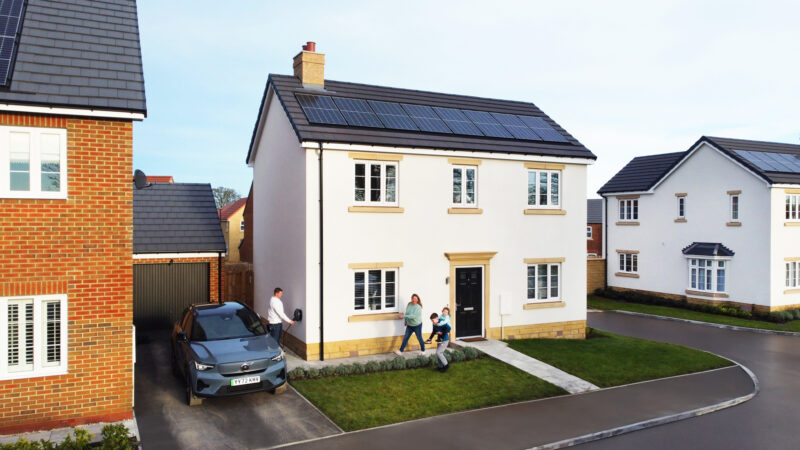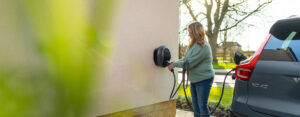Do You Need a Dedicated Home Charger?
Should you charge your car using a regular 3-pin plug or a dedicated home charger? We examine the key differences in this guide.
Last updated: Aug 13, 2025 • 4 min read

Summary
EV drivers should use dedicated chargepoints instead of 3-pin plug sockets for regular charging, as they are:
- Quicker
- Safer
- Easier to use
- Smarter
Charging speeds: Home charger vs 3-pin plug
Charging times will vary between all electric vehicles, however a typical 7.4kW home car charger will charge an electric vehicle up to 3 times faster than a conventional 3-pin plug. Take a look at the following table to see how quickly you can charge with a home charger.
| Vehicle | Charging Time* | |
|---|---|---|
| 3-Pin Socket | 7.4kW Home Charger | |
| Hyundai IONIQ 5 | 25 h | 9 h |
| Tesla Model 3 | 36 h | 12 h |
| Jaguar I-PACE | 39 h | 13 h |
| BMW i7 | 46 h | 15 h |
* Based on Pod Point estimates, charging rates can differ based on the ambient temperature, the state of the battery (e.g. empty or half full) and variation in charging rate.
Tip: For EVs with larger batteries (e.g. BMW i7 has a 101.7kWh battery), it is not feasible to fully charge overnight from a 3-pin plug. If you wanted to charge a car with a larger battery (to full) overnight, you would need at least a 7.4kW home charger. A 7.4kW charger offers more flexibility for all EVs vs 3-pin plugs.
Is charging your car from a domestic socket safe?
While 3-pin plug sockets can charge EVs, they are not designed to support the kinds of loads for the time periods that EVs require. These loads can cause heating that tests the quality of historic domestic wiring, as well as the socket. Our Pod Point Experts have seen many issues of overheating when attending to subsequently install homechargers.
Conversely, dedicated chargepoints are installed on new electrical circuits and are specifically designed for the purpose of handling car charging loads. Furthermore, chargepoints should meet a plethora of evolving regulatory standards to ensure they are safe from all feasible electrical risks. This makes dedicated homechargers far safer choices.
What’s the easiest way to charge at home?
Dedicated homechargers will be installed in a convenient spot, making it easy to plug in, where existing 3-Pin plug sockets often mean cables threaded through windows, doors and cat flaps.
Tethered homechargers are perhaps the pinnacle of ease of use, as the cable sits in its holster, needing only to be plugged in at one end.
Tip: Most domestic properties have single phase power which means the maximum charging rate for electric car home charging is 7.4kW. While faster chargepoints are available (such as a 22kW unit), these are usually found in commercial properties where there is a three phase power supply.

The smart future of charging an electric car at home
As more people utilise electric car charging at home, chargepoints will likely need to solve new energy related challenges that will arise for drivers and networks. Home chargers will soon have to contain functionality that allows them to do exactly that, where 3-pin plugs do not.
Tip: Pod Point's Solo home charger also have the capability to receive over-the-air software updates that mean they can obtain new features, receive software fixes to EV related bugs and allow our support team to perform remote diagnostics.
Can you take an EV Charger when you move?
Yes, you can take your charger with you when you move. However having a qualified electrician remove the charger and install it on your new property does carry some cost. We would advise customers to check both moving a charger or having a new one installed to determine which is more cost effective. There will also be some cabling left at your old property that the new owners will be able to hook up to a charger of their own.
